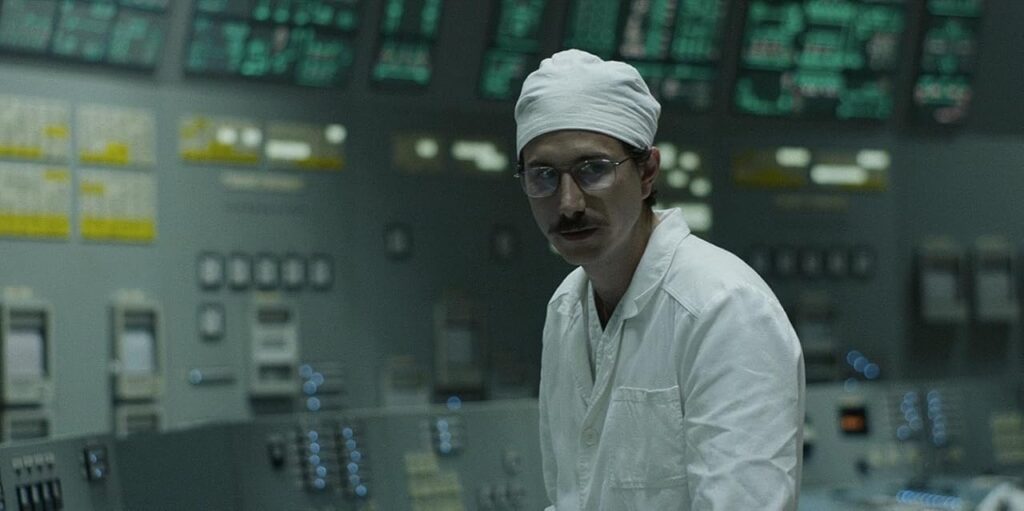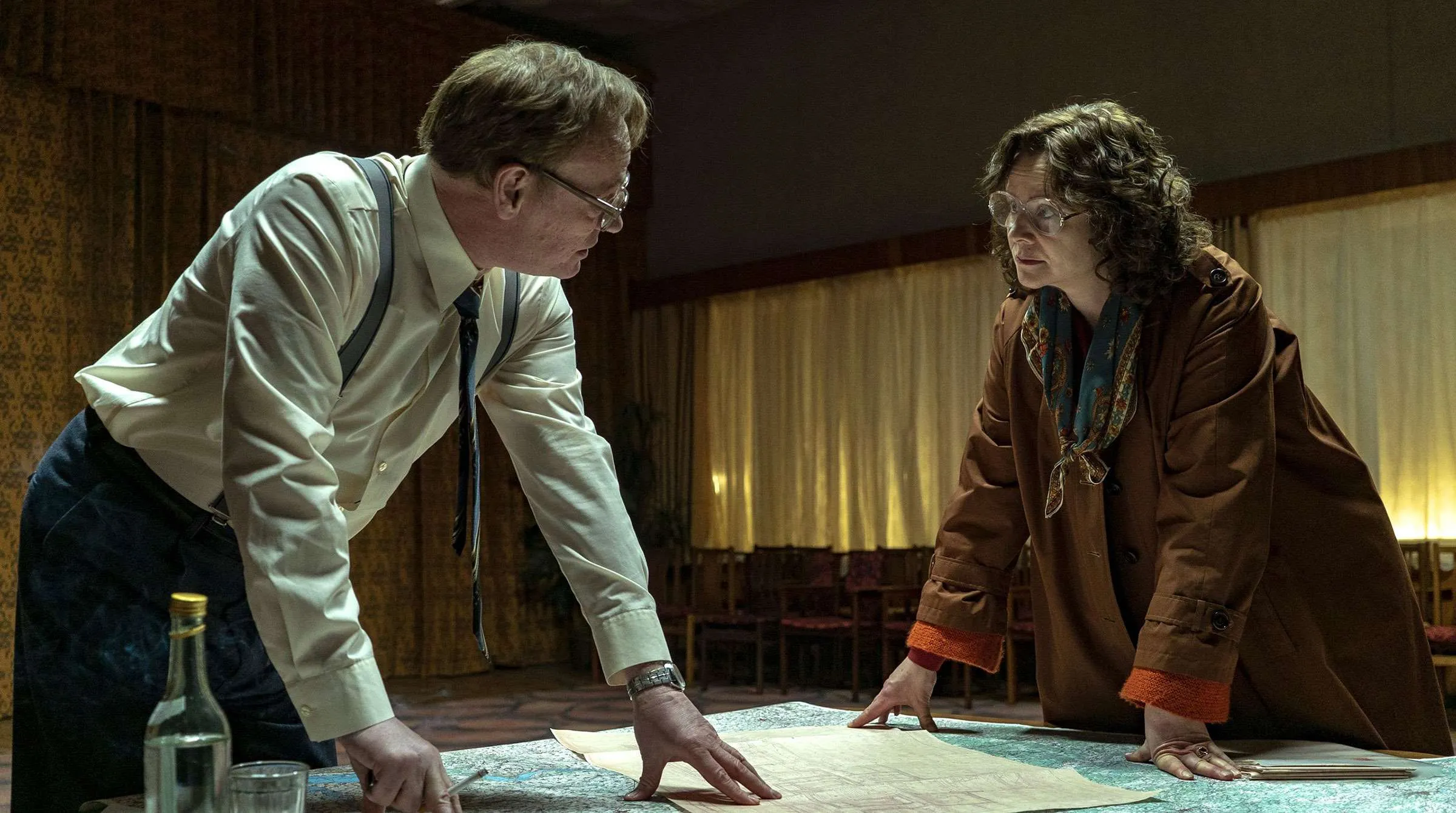The Lie said to The Truth: “Let’s take a bath together; the well water is very nice.”
The Truth, still suspicious, tested the water and found it indeed pleasant. So, they both got naked and bathed.
But suddenly, The Lie leapt out of the water and fled, wearing The Truth’s clothes.
The Truth, furious, climbed out of the well to retrieve her clothes. But the World, upon seeing The Naked Truth, looked away in anger and contempt. Poor Truth returned to the well and disappeared forever, hiding in her shame.
Since then, The Lie runs around the world, dressed as The Truth, and society is very happy… because the world has no desire to know The Naked Truth.
Jean-Léon Gérôme’s 1896 painting Truth Coming Out of Her Well predates the Chernobyl disaster by 90 years. Yet, I cannot think of a more fitting and prescient expression for that fateful day as depicted in the 2019 HBO miniseries Chernobyl. The antagonist in Chernobyl is lies.
We see people in a position to address the situation deny there’s even a problem. An exploded reactor spewing radiation is as obvious as a naked person, yet bureaucrats brush it off as just a hydrogen tank explosion. It is revealed that scientists were aware of preexisting design flaws in the reactor’s failsafe, but this was covered up by the government years ago. This miniseries condemns all people in power who deliberately keep the masses in the dark because they know they themselves are free from risk.

Chernobyl is not a mere historical retelling or documentary of the disaster; it’s five episodes of full-on horror. Everything from the hue, color grading, lighting, sound design, sets, costumes, and overall presentation is a masterclass in visceral horror. Chernobyl unfolds like a supernatural horror show, where humans meddle with cosmic forces beyond their control. Images of the exposed core after the nuclear meltdown evoke a god awakened from slumber.
Director Johan Renck, known for his music videos and episodes of Breaking Bad, helms all five episodes with a consistent vision. Renck’s camera often feels unsteady, handheld in a way that reflects the characters’ unstable mental states during the crisis.
Writer Craig Mazin distills this real-life tragedy into five intense episodes, using familiar archetypes like the One Sane Man in Valery Legasov (Jared Harris), the Eastern European hardliner in Boris Shcherbina (Stellan Skarsgård), the Mean Boss in Anatoly Dyatlov (Paul Ritter), the truth-seeking scientist in Ulana Khomyuk (Emily Watson), and the government officials covering up the situation.
While some may see these as clichés, Mazin employs them to convey complex events in an accessible way. In reality, Legasov was never at the trial; he was ostracized by his community of scientists who participated in the cover-up. But such dramatic adjustments serve the story’s message, capturing the atmosphere of those events—some details of which weren’t even public knowledge.

One unforgettable episode depicts characters clearing graphite off a roof, creating the most stressful 90 seconds of recent television, keeping viewers on edge with palpable anxiety. These men, ordered to remove radioactive debris, did so without fully grasping the stakes. That roof was poisoning the environment every second, and stepping on it was tantamount to suicide. It’s astonishing to think humans made a place on our planet more hazardous than the moon’s surface, and our only solution was men with shovels.
Hildur Guðnadóttir’s score is the sonic equivalent of radiation itself. This isn’t casual listening; it complements the images on screen, evoking the feel of radiation. Created using field recordings from a decommissioned nuclear power plant, the score is experimental, even more raw than her Oscar-winning work on Joker. Radiation has no color or odor, only the ominous blaring of dosimeters.
Tension spikes as the cracking sound turns to a steady tone, signaling the presence of deadly ionizing radiation. This score and sound design are a chilling auditory portrayal of the fear of the unknown. All these collaborators came together to tell a story that reminds us of the cost of lies and the importance of responsibility. We may never know the exact death toll from Chernobyl.
Radiation spread across Europe, likely contributing to countless cancer deaths since 1986. There were multiple reactors across the Soviet Union, each with the same design flaws. This isn’t just a “Communist” issue. There’s a recurring pattern of governments donning lies as truths, shifting blame, and assuring people that all is safe. It’s prescient that Chernobyl aired just one year before the coronavirus outbreak—another invisible threat allowed to spread due to incompetence, infrastructure flaws, and lies that shield accountability.

Chaitanya Tuteja is someone who enjoys sharing his thoughts on books, movies, and shows. Based in India, he appreciates exploring different stories and offering honest reflections. When not reflecting on his favorite media, Chaitanya enjoys discovering new ideas and embracing life’s simple moments.


This website, you can discover lots of online slots from top providers.
Users can try out traditional machines as well as modern video slots with high-quality visuals and exciting features.
Whether you’re a beginner or a seasoned gamer, there’s a game that fits your style.
casino
All slot machines are ready to play round the clock and designed for PCs and tablets alike.
No download is required, so you can get started without hassle.
The interface is intuitive, making it quick to explore new games.
Register now, and discover the thrill of casino games!
Here, you can discover a great variety of casino slots from famous studios.
Users can try out classic slots as well as feature-packed games with vivid animation and bonus rounds.
Whether you’re a beginner or a seasoned gamer, there’s a game that fits your style.
play casino
The games are instantly accessible anytime and optimized for PCs and smartphones alike.
No download is required, so you can get started without hassle.
Platform layout is easy to use, making it quick to browse the collection.
Register now, and dive into the world of online slots!
This website provides many types of pharmaceuticals for home delivery.
You can securely buy health products from your device.
Our range includes popular medications and targeted therapies.
All products is acquired via verified pharmacies.
silagra vs suhagra
We prioritize customer safety, with data protection and timely service.
Whether you’re looking for daily supplements, you’ll find safe products here.
Begin shopping today and experience trusted online pharmacy service.
This website offers many types of medications for home delivery.
Customers are able to quickly order health products without leaving home.
Our inventory includes everyday medications and custom orders.
The full range is sourced from verified distributors.
cenforce 100 mg
Our focus is on discreet service, with secure payments and fast shipping.
Whether you’re looking for daily supplements, you’ll find affordable choices here.
Visit the store today and enjoy convenient access to medicine.